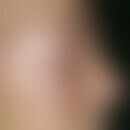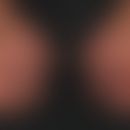Synonym(s)
DefinitionThis section has been translated automatically.
An antigen formed in the skin by photochemical (short-wave light, UV radiation) modification of a photosensitive prohapten to the hapten and via its connection with a protein in the skin. The prohapten can enter the skin exogenously or endogenously. Drugs, cosmetics and body care products are the most well-known photoallergens (see table).
- A photo patch test is performed to identify photo contact allergens in photosensitization.
- Systemic photosensitizers (see table) must be detected by systemic photoprovocation.
LiteratureThis section has been translated automatically.
- Campi P, Pichler WJ (2003) Quinolone hypersensitivity. Curr Opin Allergy Clin Immunol 3: 275-281
- Epstein JH (1999) Phototoxicity and photoallergy. Seminar Cutan Med Surg 18: 274-284
- Ferguson J (2002) Photosensitivity due to drugs. Photodermatol Photoimmunol Photomed 18: 262-269
- Fujita H et al (1965) Five cases which showed diffuse erythema and edematous papules possibly caused by saccharin, Acta Derm (Kyoto) 60: 303
- Gordon HH (1972) Allergic reaction to saccharin. On J Obstet Gynecol 113: 1145
- Hölzle E et al (1991) Photopatch testing: the five-year experience of the German, Austrian, and Swiss photopatch test group. J Am Acad Dermatol 25: 59-68
Lugović-Mihić L et al. (2017) Drug-Induced Photosensitivity - a Continuing Diagnostic Challenge. Acta Clin Croat 56:277-283.
- Moore EN (2002) Drug-induced cutaneous photosensitivity: incidence, mechanism, prevention and management. Drug Saf 25: 345-372
- Shudder S (2003) Solar urticaria. dermatologist 54: 952-958
- Scheme A (2000) Adverse reactions to cosmetic ingredients. Dermatol Clin 18: 685-698
- Schempp CM et al (2002) Plant-induced toxic and allergic dermatitis (phytodermatitis). Dermatologist 53: 93-97
- Taub SJ (1972) Untoward reactions to saccharin. Eye Ear Nose Throat Mon 51: 405-406
TablesThis section has been translated automatically.
Photoallergically active substances (selection)
Main Groups |
Active substances/active substance classes |
Disinfectants |
Bithionol |
Buclosamide | |
Carbanilide | |
Dibromosalicylanilide | |
Dichlorophen | |
Hexachlorophen | |
Pentichlor | |
Tetrabromosalicylanilide | |
Tetrachlorosalicylanilide | |
Tribromosalicylanilide | |
| |
Antidiabetics |
Tolbutamide |
Glibenclamide | |
Chlorpropamide | |
Carbutamide | |
| |
Antiinfectives |
Doxycycline |
Sulfanilamide | |
Sulphathiazole | |
Sulphisoxazole | |
Sulfamethoxypyridazine | |
Sulfadimethoxin | |
| |
Antihypertensives/diuretics |
Chlorthalidone |
Chlorothiazide | |
Hydrochlorothiazide | |
Quinethazon | |
| |
|
Other
|
Amantadine |
Amitriptyline | |
Azathioprine | |
Benzophenones | |
Cadmium sulfide | |
Carbinoxamine | |
Chloroquine | |
Chlordiazepoxide | |
Cyproheptadine | |
Dexketoprofen | |
Diclofenac | |
Digalloyl triolate | |
Diphenhydramine | |
Fragrances (Musk ambrette, sandalwood oil, 6-methyl coumarin) | |
Gold | |
Griseofulvin | |
Hypericin (St. John's wort) | |
Imipramine | |
Ketoprofen | |
Light stabilizers (PABA, benzophenone, digalloyl trioleate; p-methoxycinnamic acid isoamyl ester, bisoctrizole, octocrylene ) | |
NSAID | |
Phenothiazines (chlorpromazine, promethazine) | |
Estrogens | |
para-aminobenzoic acid | |
|
Prochlorperazine BRAF kinase inhibitors (vemurafenib, dabrafenib) EGFR inhibitors VEGFR inhibitors MEK inhibitors | |



